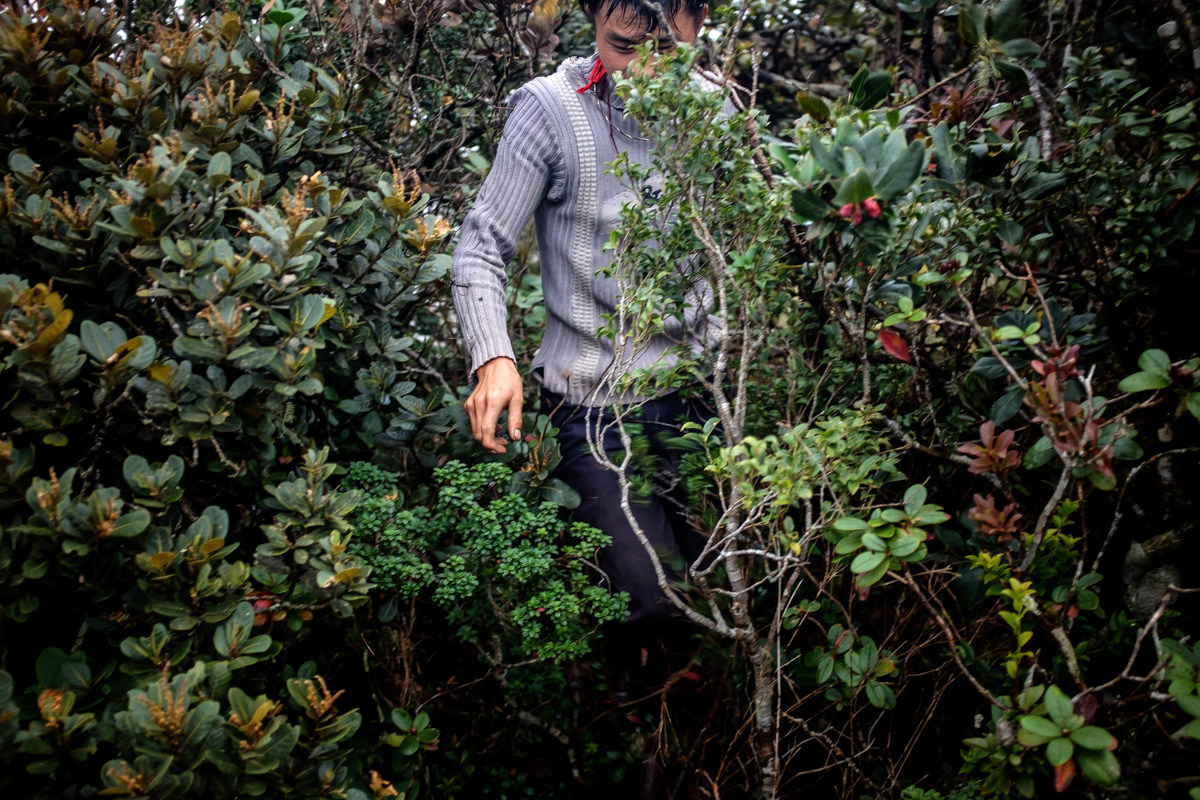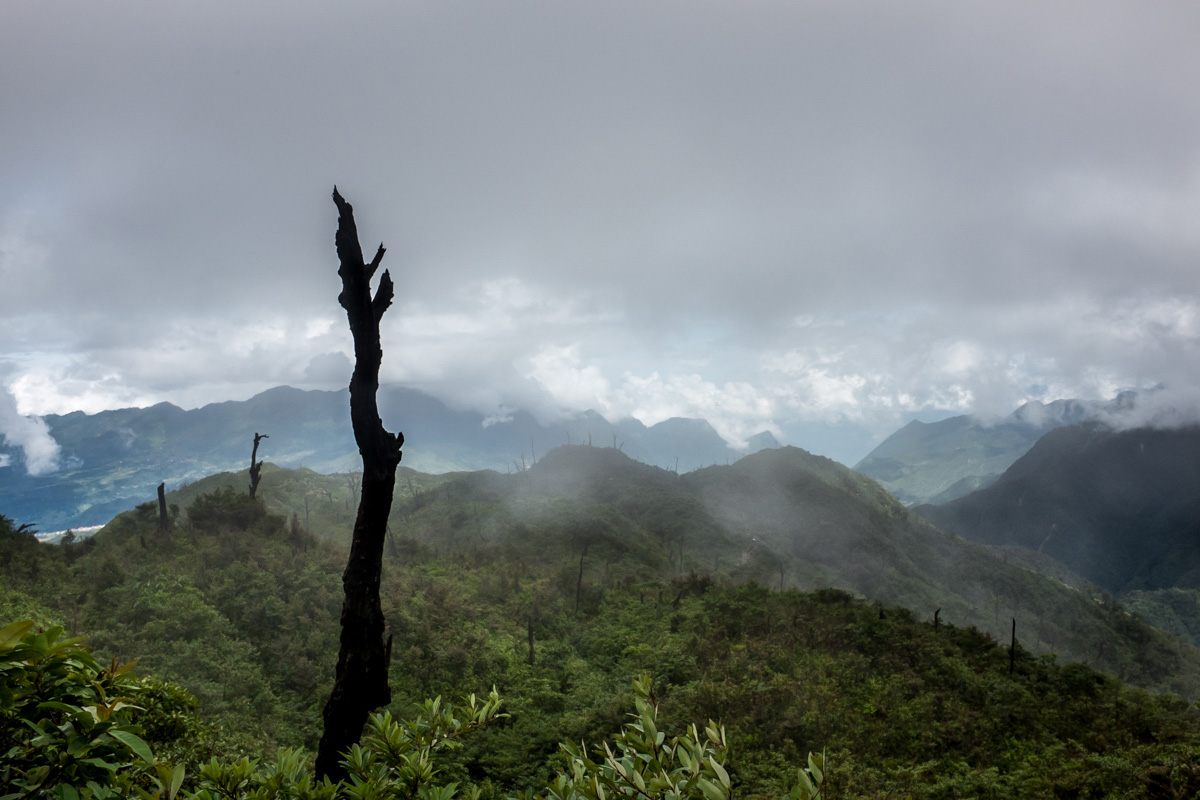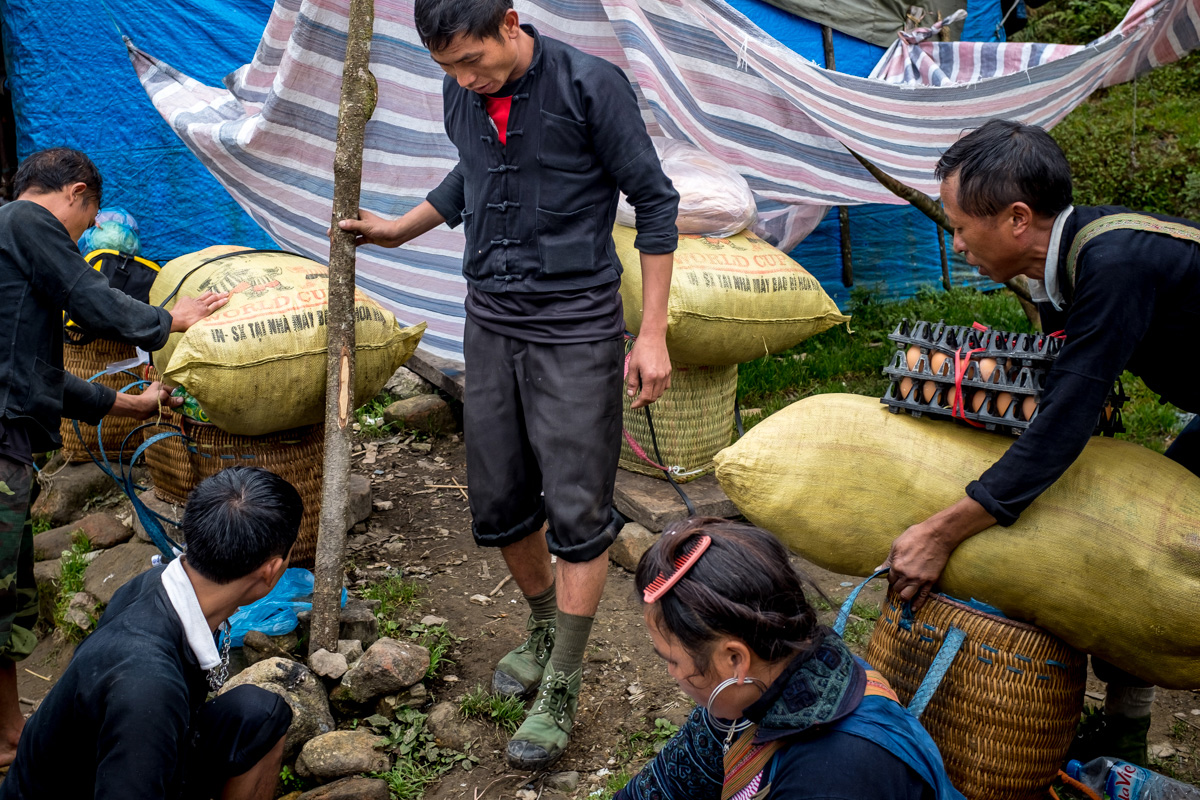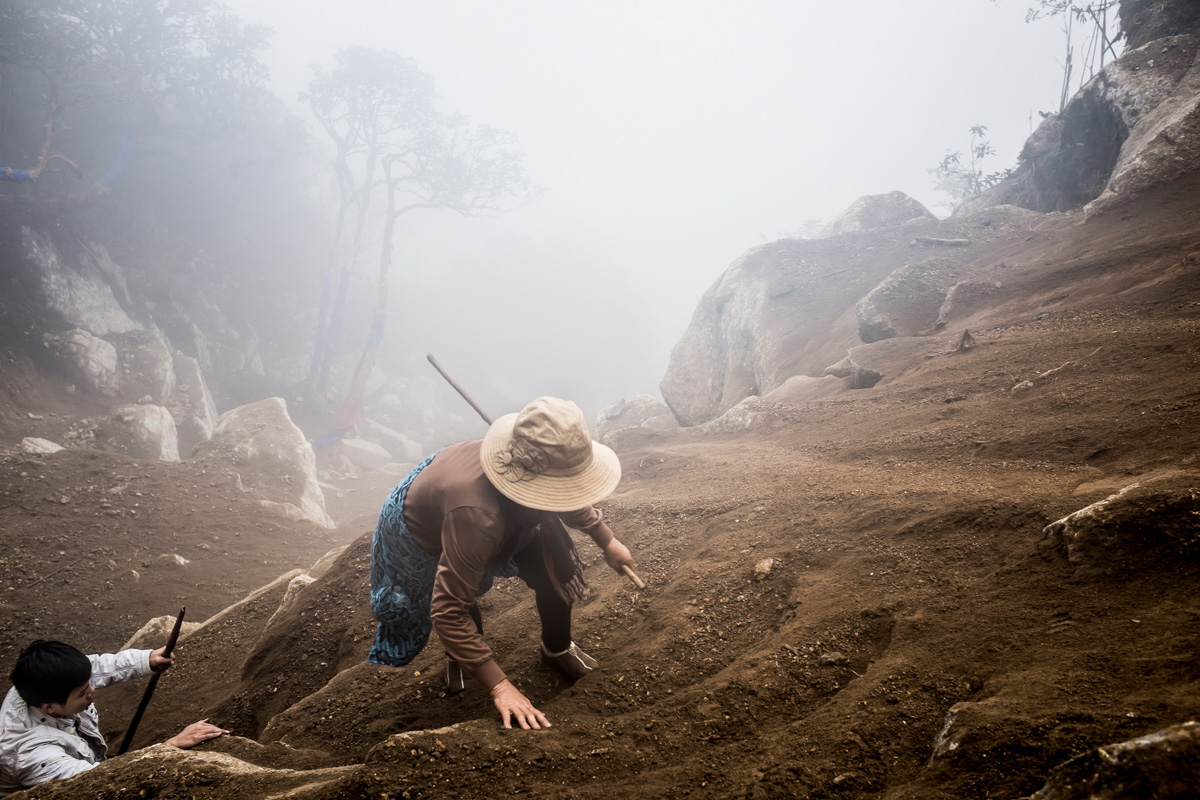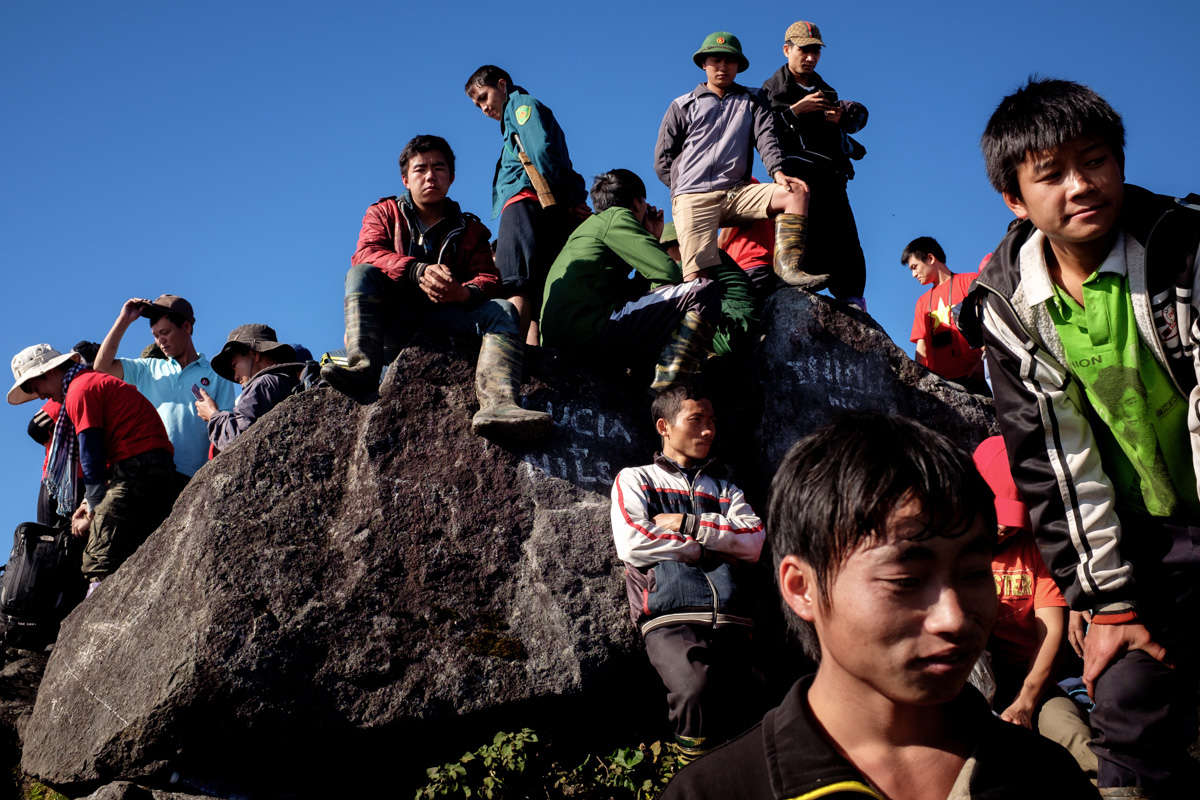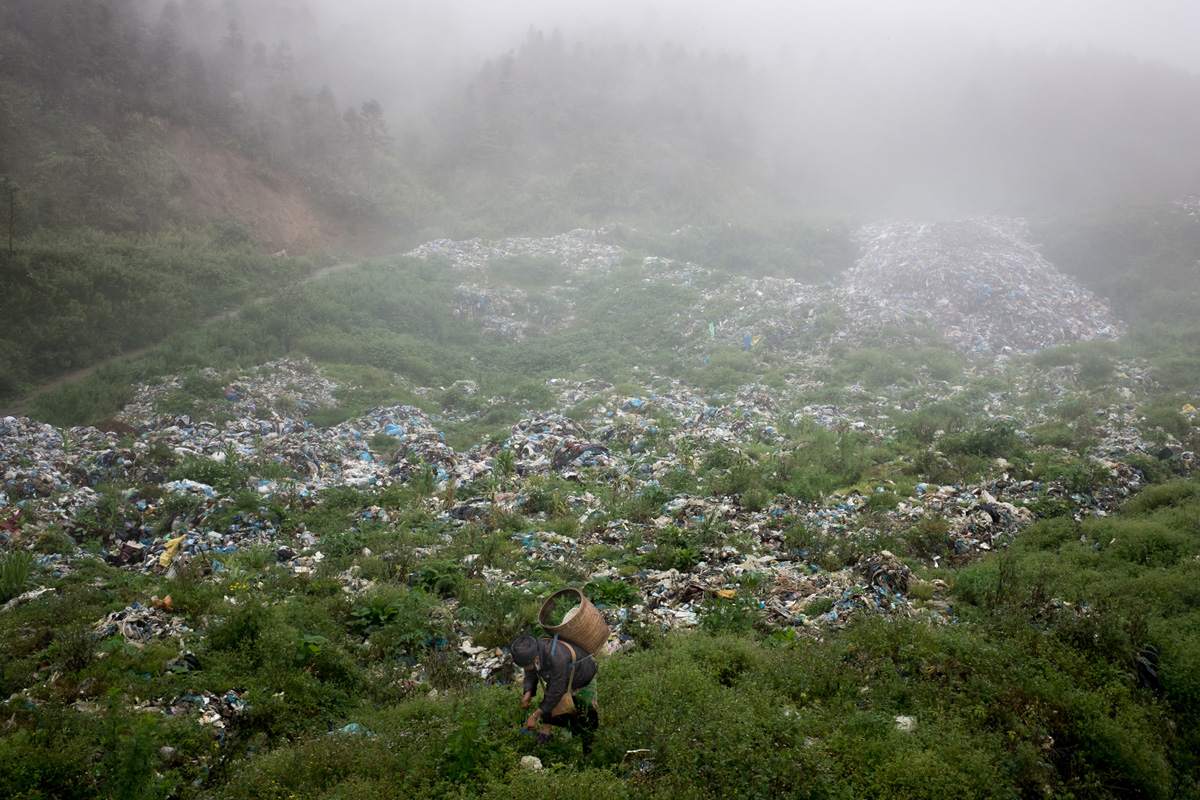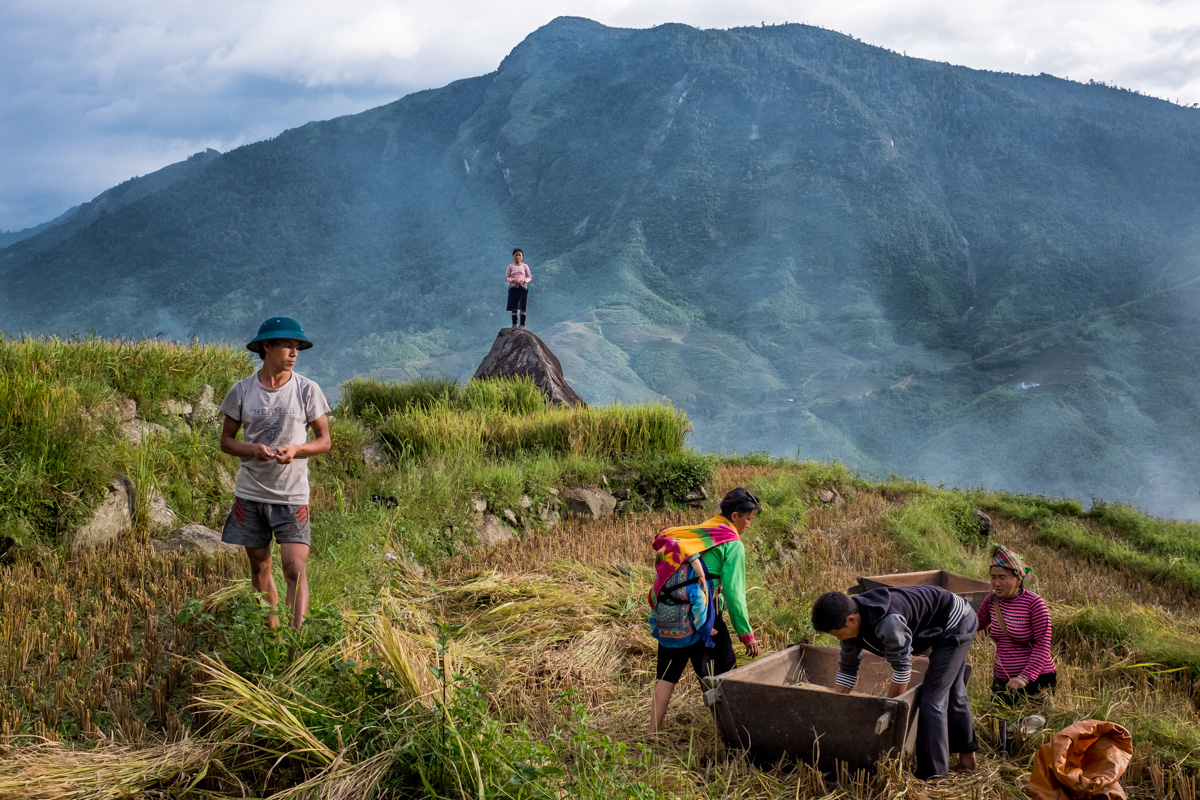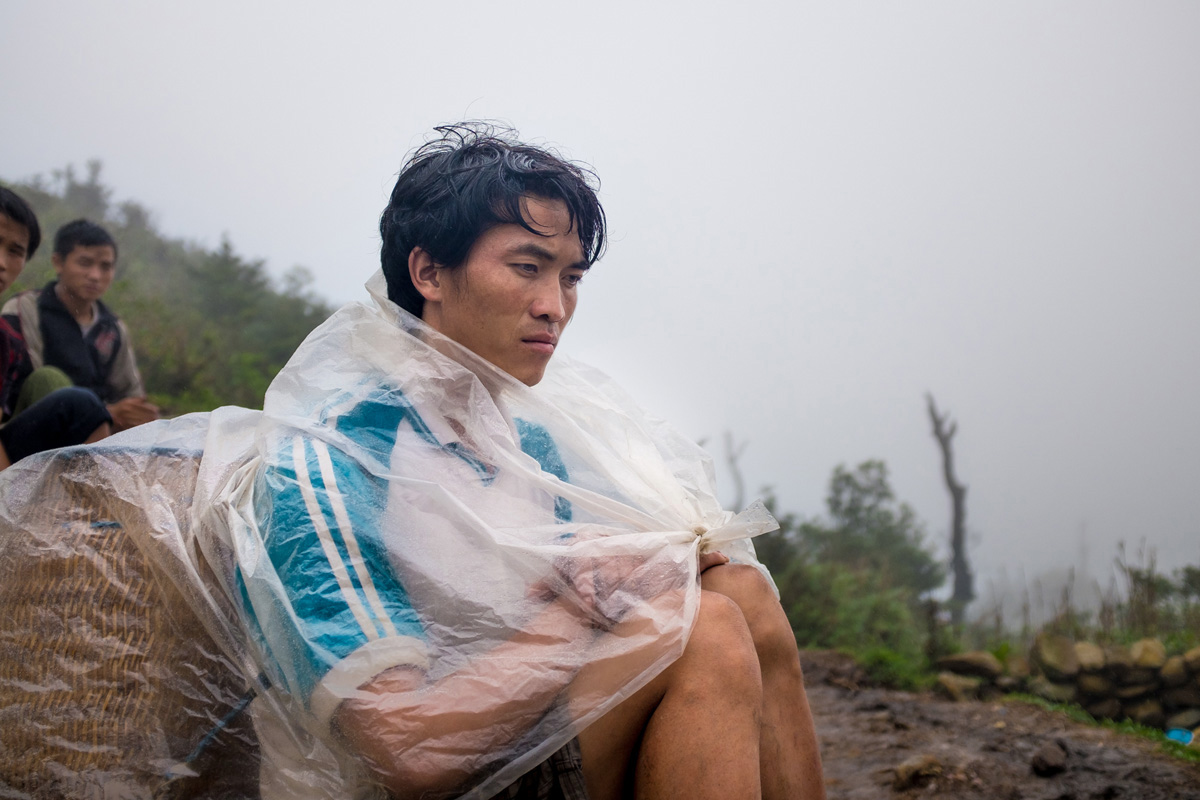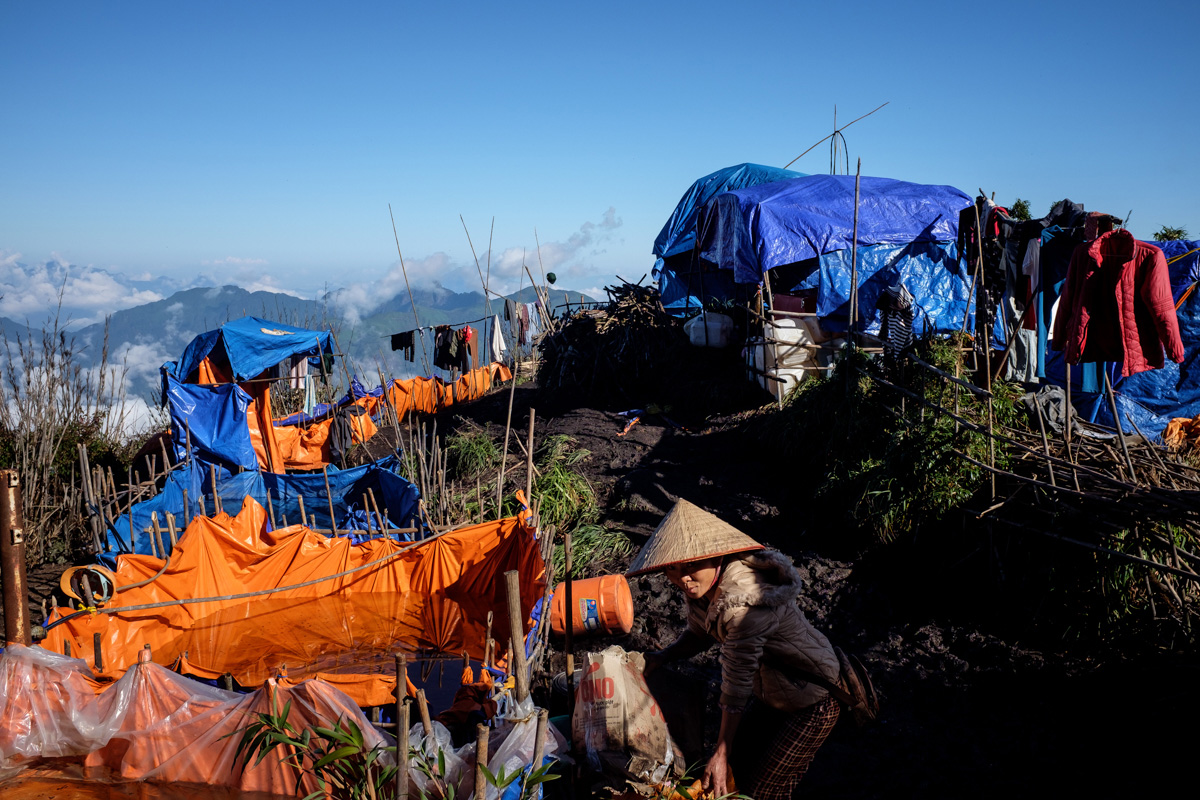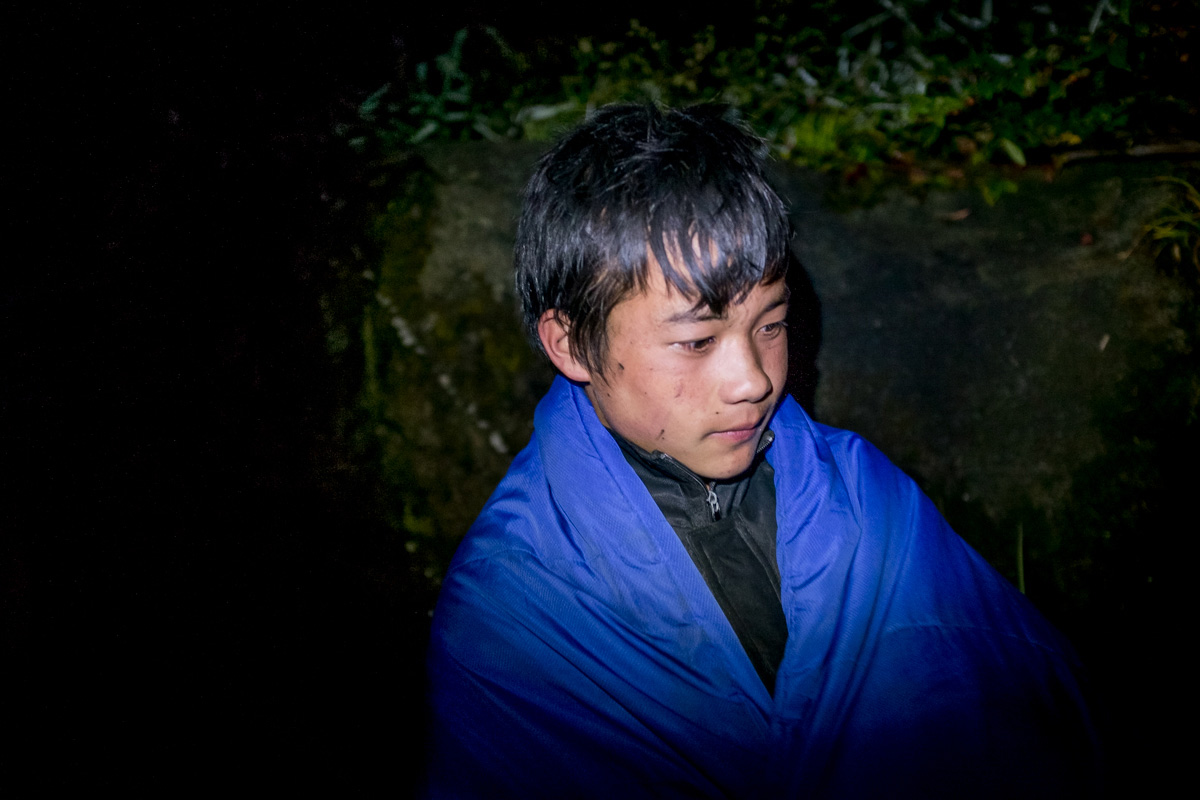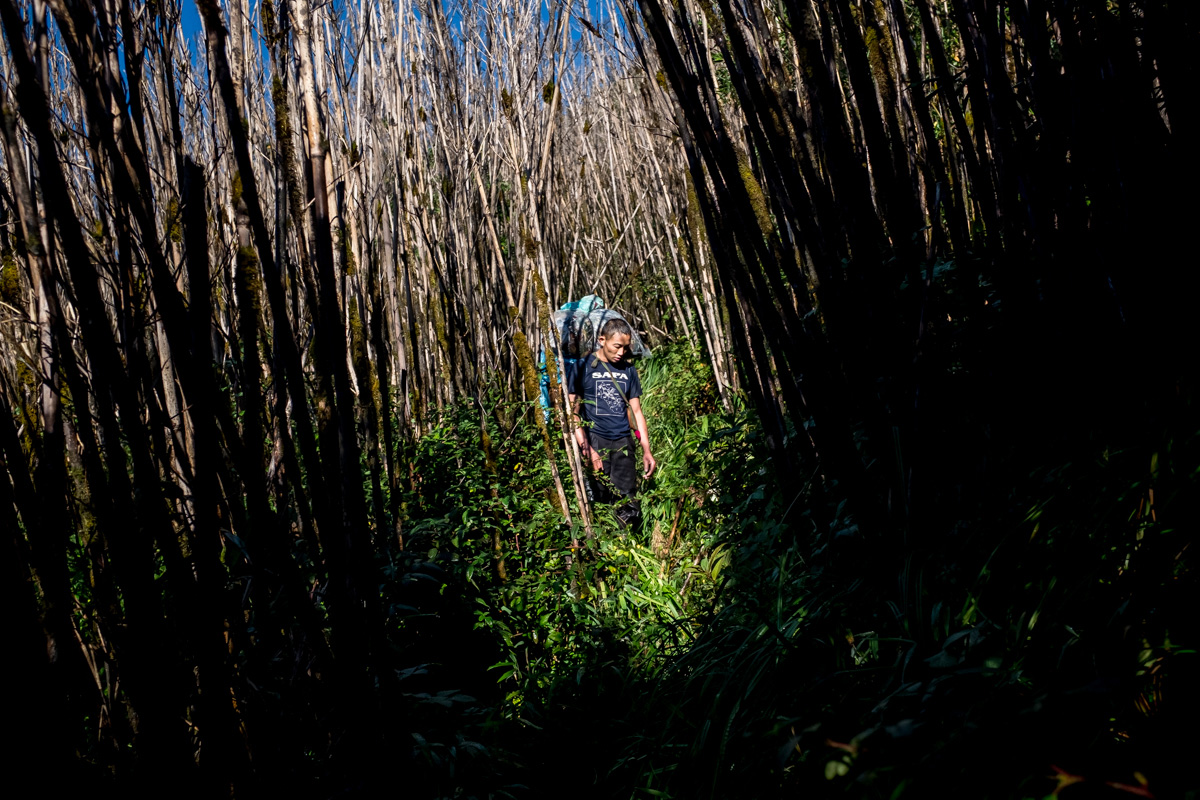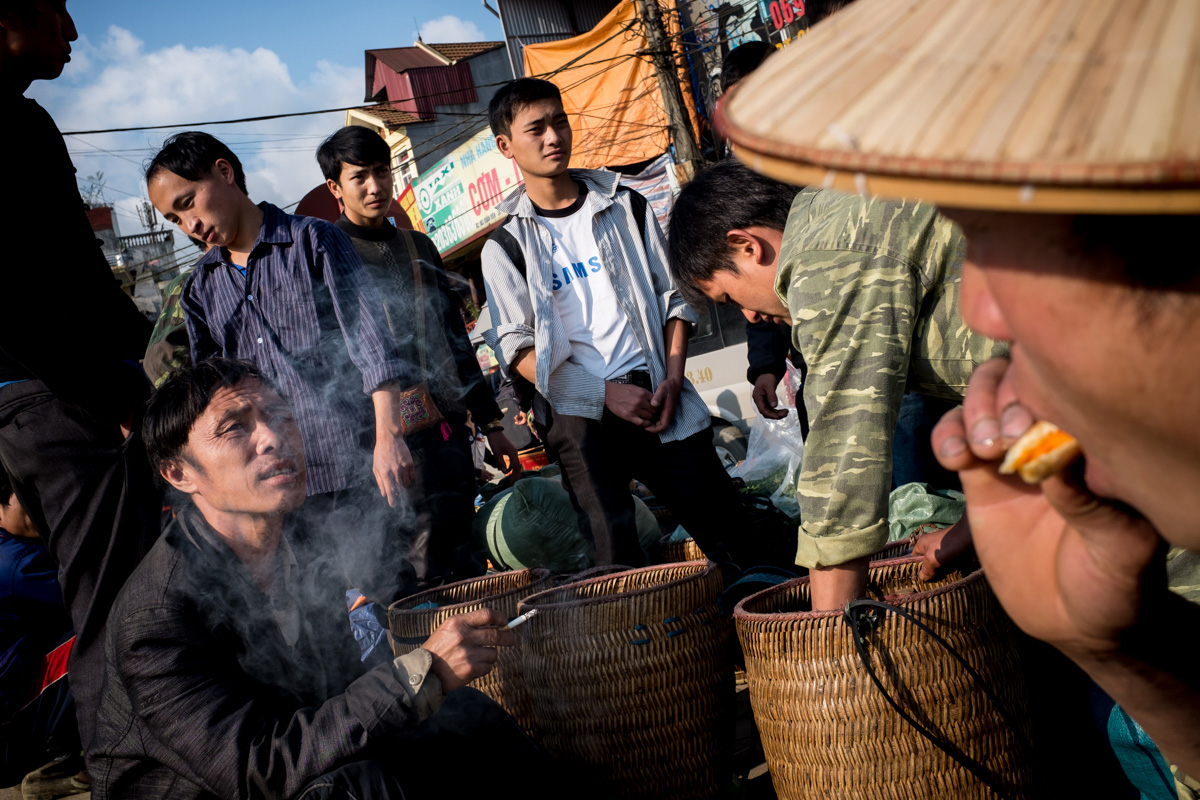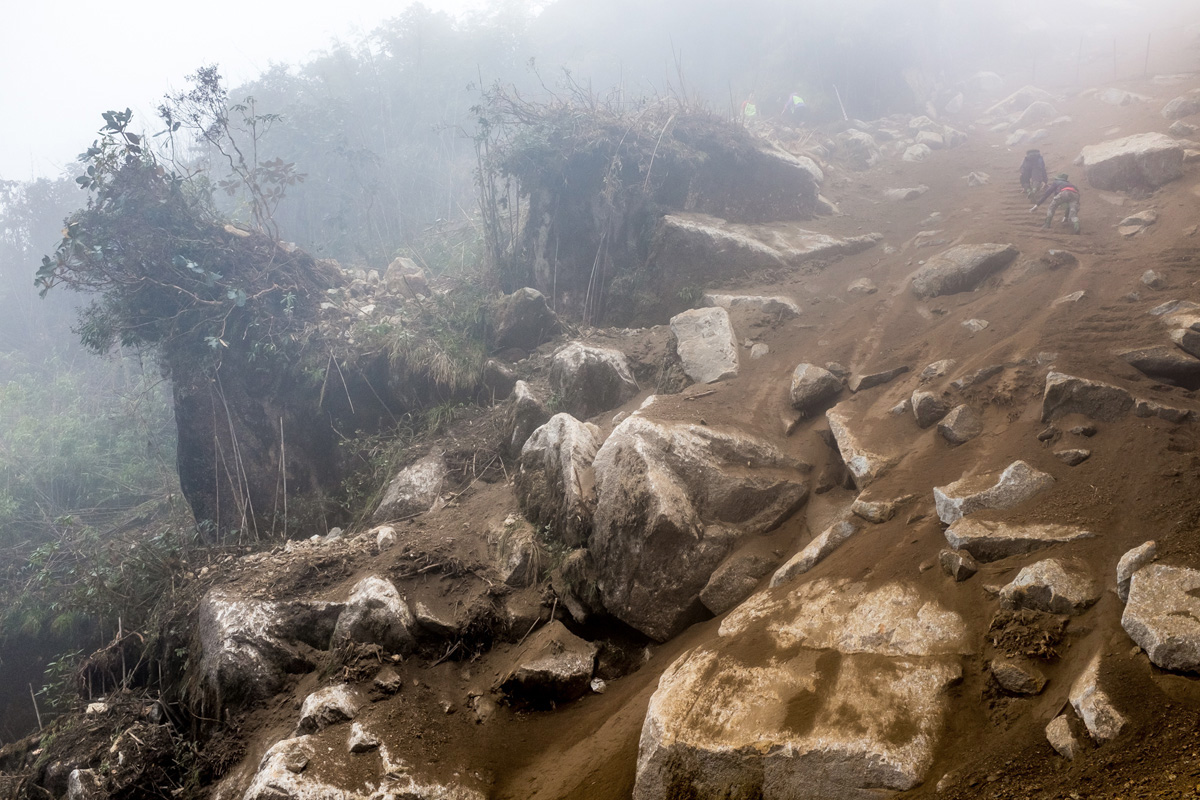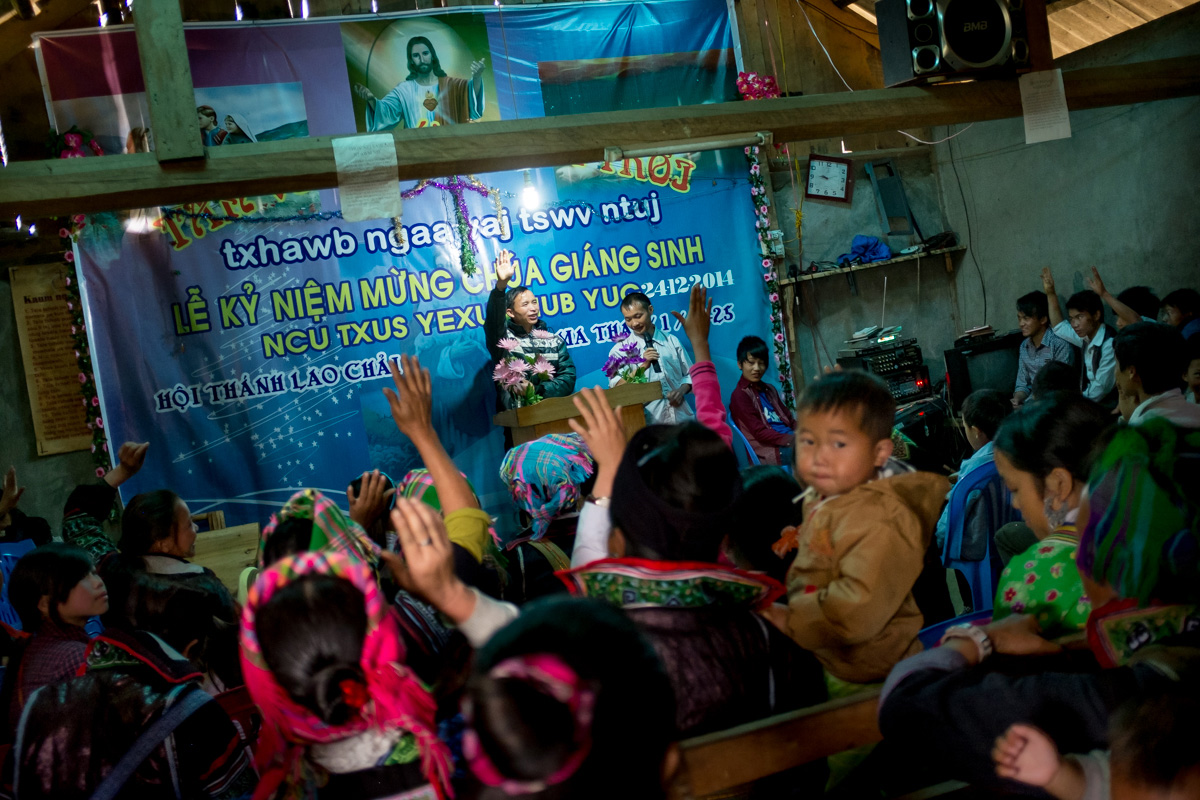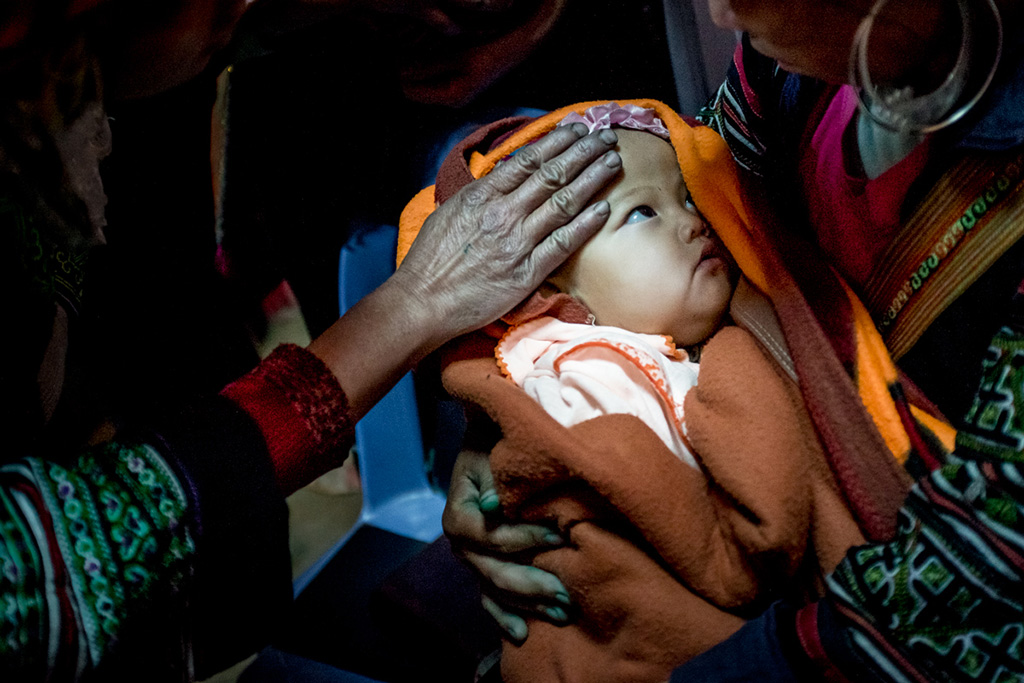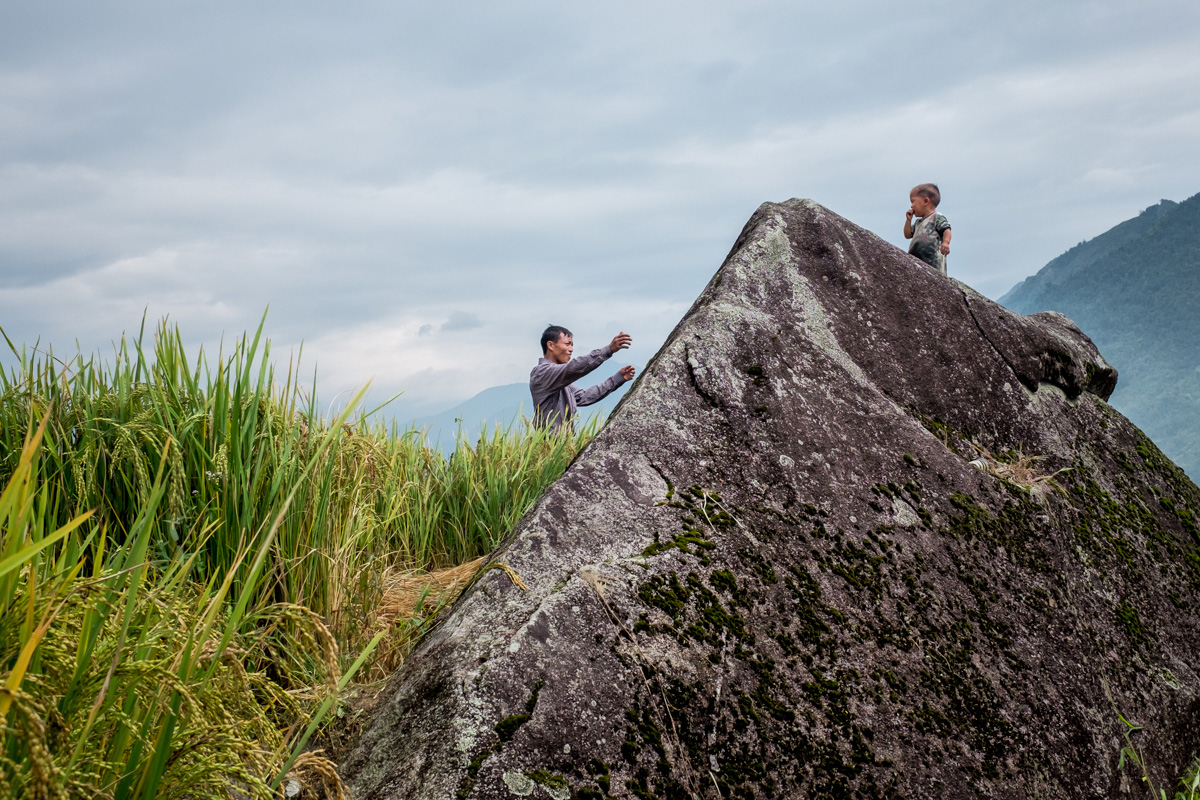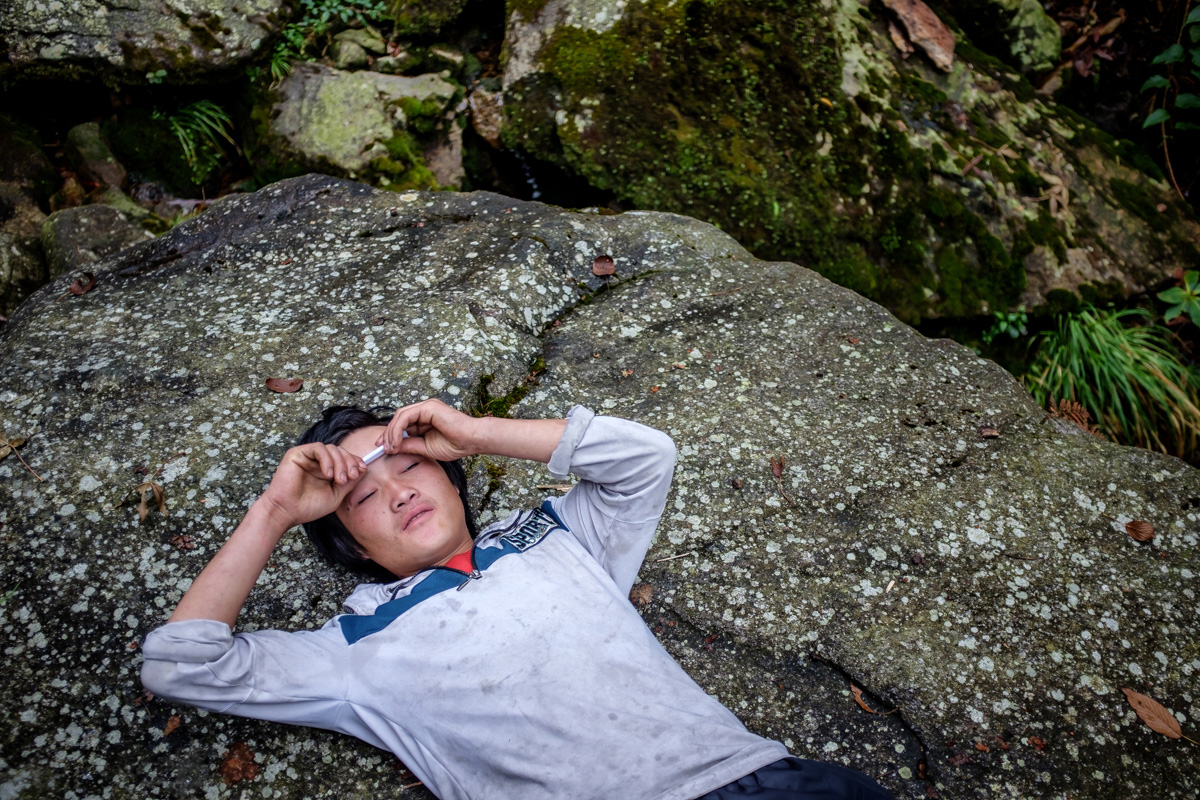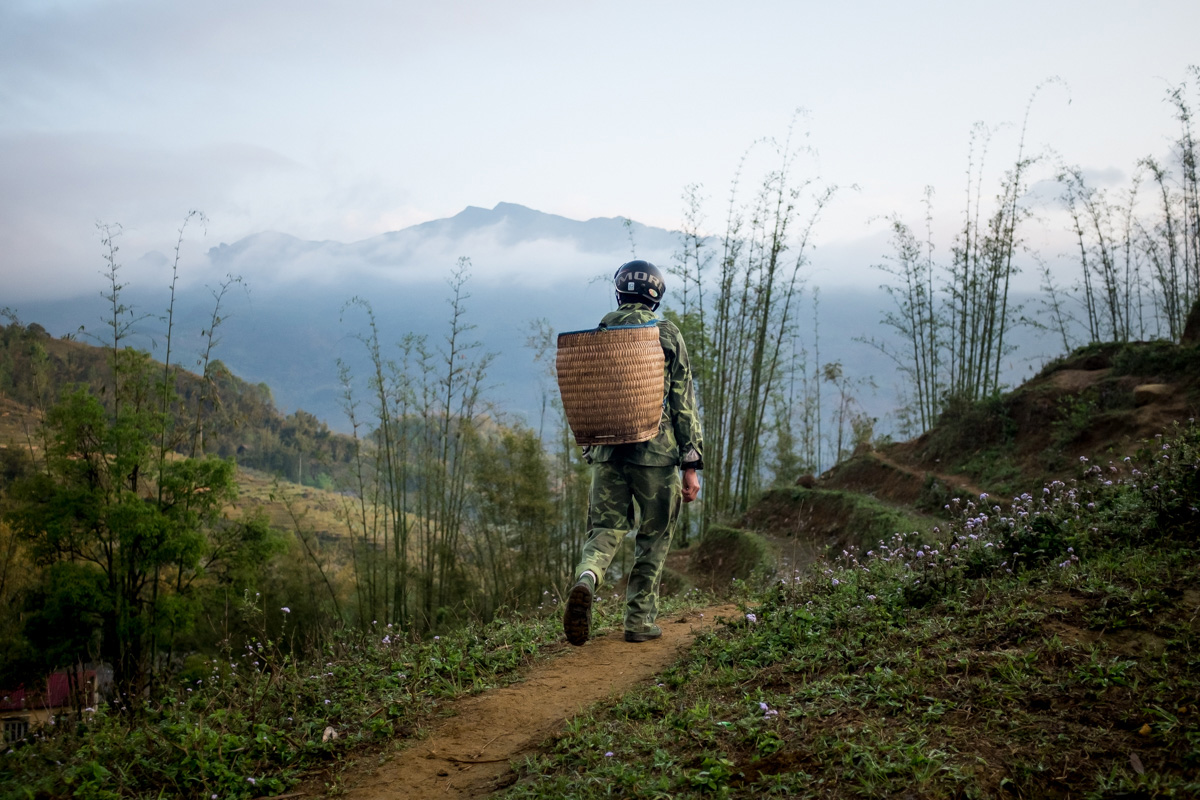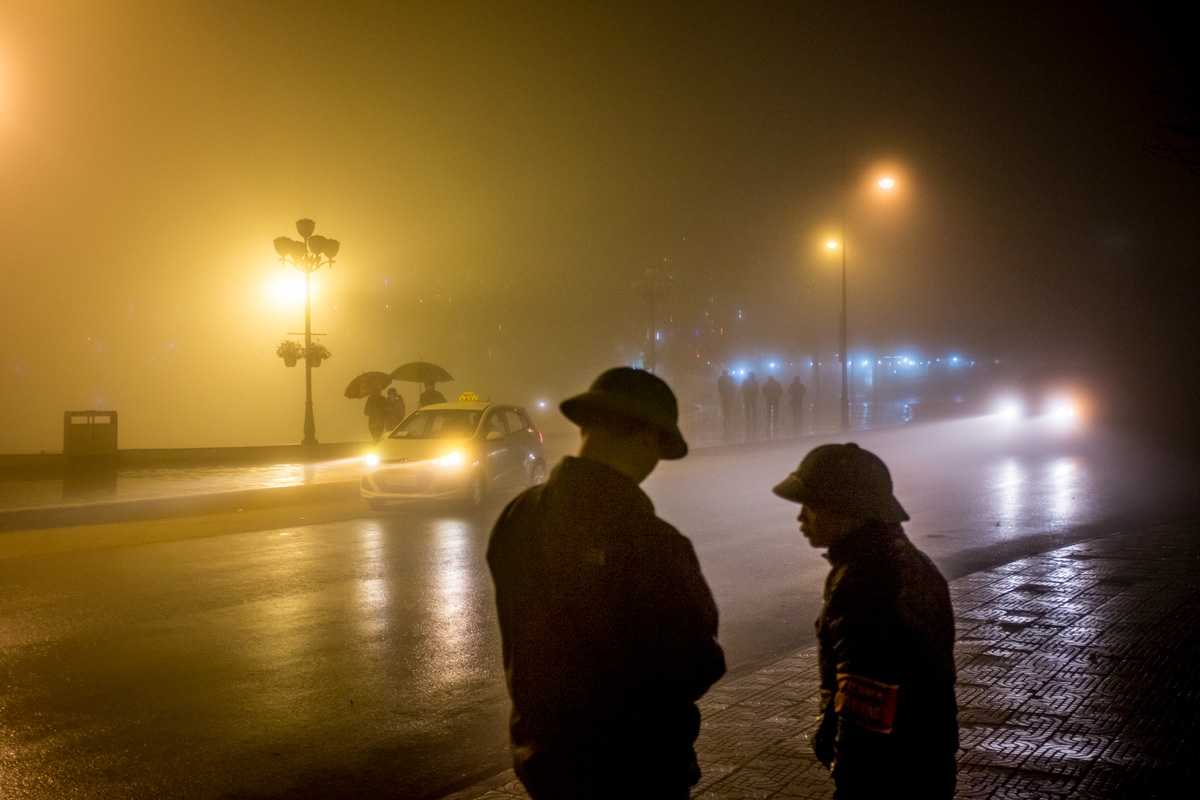Nestled at 3,143 meters above sea level, Mount Fansipan is Vietnam’s highest summit and a magnet for travelers seeking challenging treks. Guiding them are ethnic Hmong porters, who earn just US$8 a day despite grueling conditions and limited protective gear. With few other livelihood options, stemming from minimal education and scarce agricultural land, many rely solely on these treks for income.
A US$200 million cable car project, slated for completion in 2016, aims to transform the arduous two-to-three-day climb into a 15-minute ride. Developers plan to add resorts and religious sites on the mountain, preparing for up to 20,000 tourists per day, a massive shift that could turn this once-remote peak into a bustling destination.
While expanded tourism promises economic relief for some, it also threatens the porters’ primary source of income. This long-term photography project documents their lives against the backdrop of Fansipan’s rapid urbanization, and examines the environmental effects of modern tourism on a mountain long revered as our mother.
Our Mother The Mountain 2013 – 2014
Vang A San, 28, navigates through a gap in the trees along the challenging Cat Cat route, the longest of the three popular paths up Mount Fansipan, alongside Tram Ton and Sin Chai.
A massive forest fire in early 2010 ravaged 3,000 hectares of the Hoang Lien Son mountain range, taking thousands of firefighters, rangers, police, and local residents two weeks to extinguish.
Hmong porters load their baskets with weights of up to 40kg at the 2,200m campsite.
Porters take a cigarette break, covering their baskets with plastic bags to shield them from impending rain.
Tourists ascend the newly cleared path to Mount Fansipan's summit, once dense tropical forest, now repurposed for the cable car project.
Porters pause for a brief respite amidst the activity as tourists celebrate at the summit on a crowded day.
Hang A Dau, 15, gathers wood for a campfire at the 2,800m campsite.
A Hmong woman collects herbs at a landfill site in Sapa, where local and tourist waste is stored.
Ma A Di, 34, leader of a porter group, works with his extended family during the harvesting season.
The extended family of Hang A Linh gathers to admire the new television he brought home that day.
A Hmong porter takes a rest en route to the 2,200m campsite.
A worker collects rainwater from catchment tanks outside the 3,000m campsite, where approximately 100 workers reside permanently for cable car construction.
Hang A Dau, 15, wraps himself in a blanket to stave off the cold at the 2,800m campsite, a common sight for young Hmong porters beginning work at 14-15 years old.
Vang A Ma, 30, searches for the trail to the summit at 3,000m on the Cat Cat route.
Hmong porters gather in the center of Sapa, awaiting tourists before embarking on their climb up Mount Fansipan.
A vast expanse of mountains is cleared for the cable car project.
Sunday service at Lao Chai Protestant Church, reflecting the Christian faith of many Hmong people in Lao Cai.
Locals turn to prayer and traditional treatments at Lao Chai Protestant Church to save the daughter of a Hmong porter, after she was deemed incurable by the local hospital.
Ma A Di retrieves his nephew from the rice fields, highlighting agriculture as the primary occupation for most minorities in Vietnam's northern mountains.
Hang A Sa, 22, takes a brief nap while awaiting tourists along the trail.
Ma A Di returns home after days of work on the mountain.
City guards chat on a quiet night at the city hall, anticipating a surge in tourism from the cable car project, set to revitalize the once-sleepy town of Sapa.
